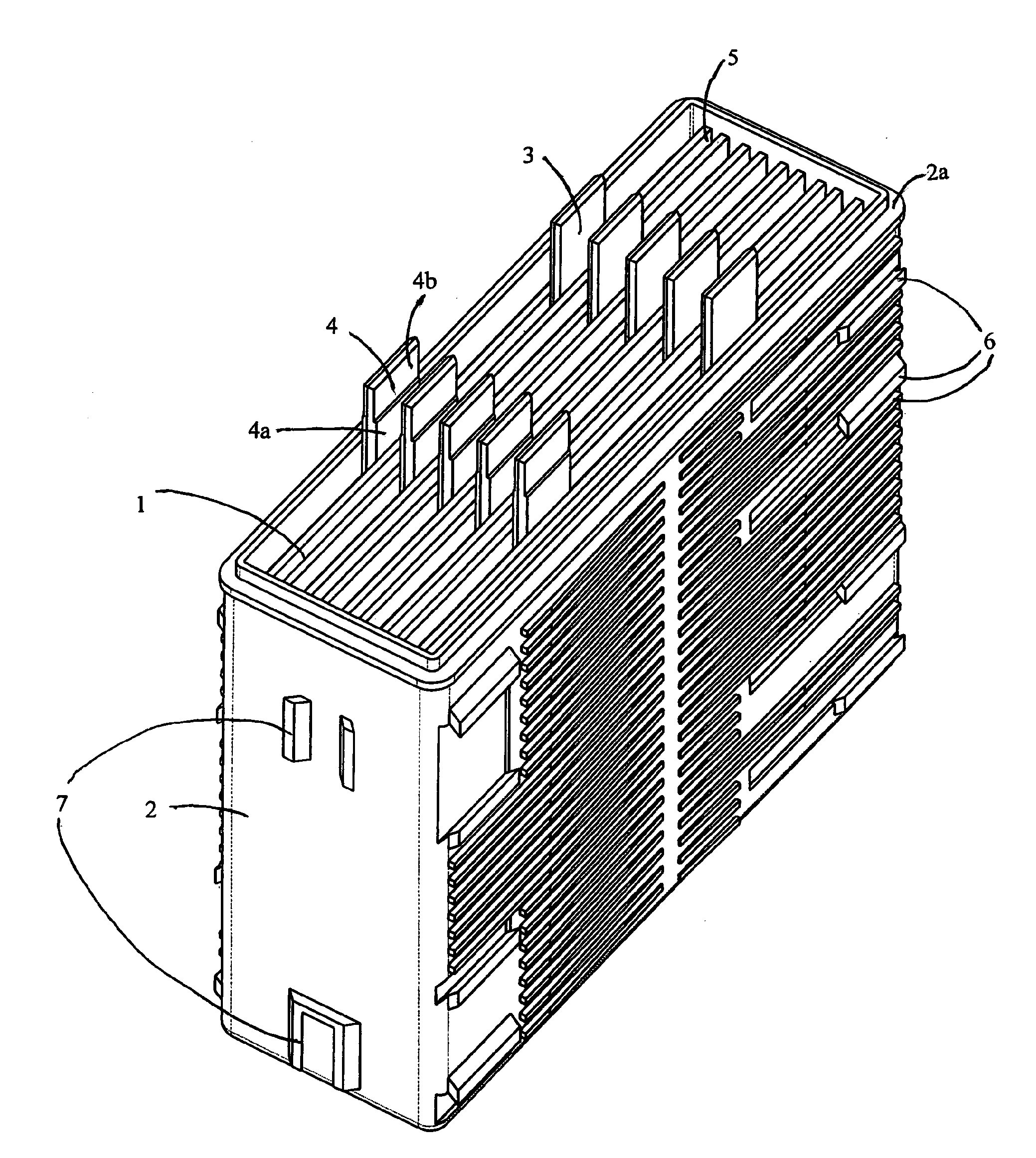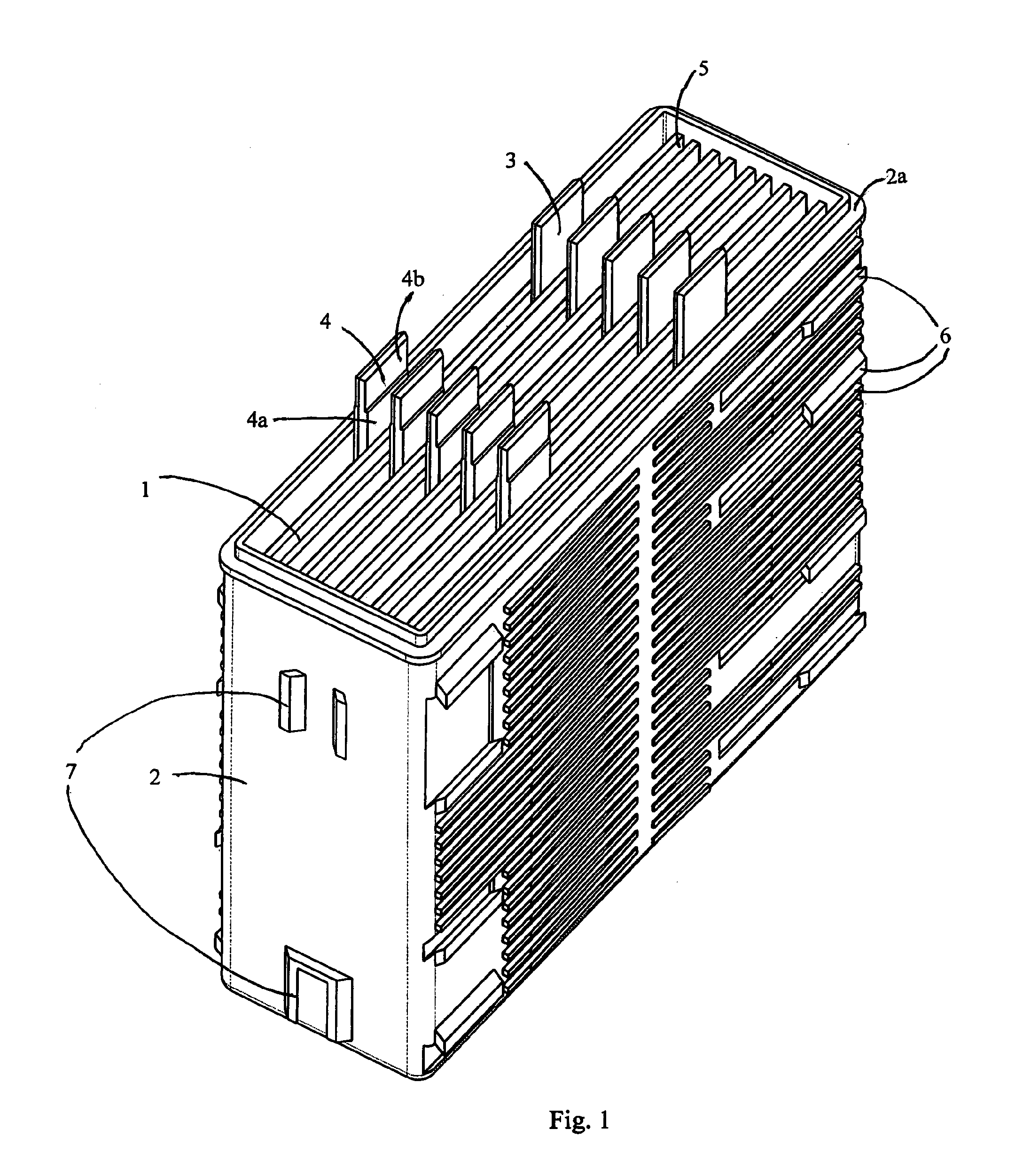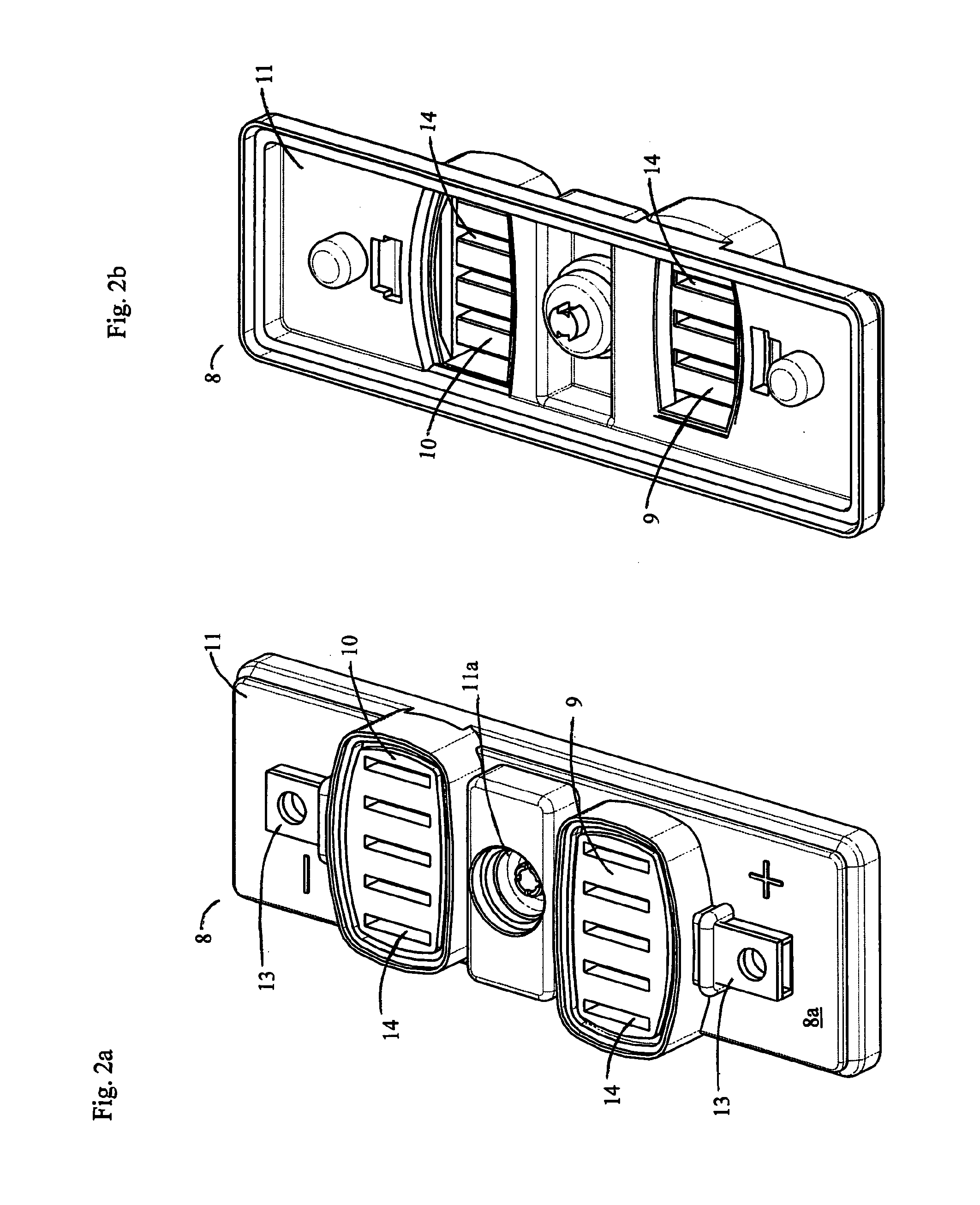Battery and a Process for Making a Battery
a battery and process technology, applied in the field of batteries, can solve the problems of high cost and complex nature of cast-on strap machines, and achieve the effects of reducing the height of the battery, simplifying the process of invention, and facilitating incorporation
- Summary
- Abstract
- Description
- Claims
- Application Information
AI Technical Summary
Benefits of technology
Problems solved by technology
Method used
Image
Examples
Embodiment Construction
[0041]The process of the invention is especially suitable for the manufacture of lead acid batteries. Such batteries are used for a wide arrange of applications, including reserve power and motive power. In a preferred embodiment, the battery is a valve-regulated lead acid (VRLA) battery but the process of the invention is equally applicable to flooded cell batteries and motive power batteries.
[0042]The positive plates and negative plates may be any desired shape or size. The word “plate” refers to generally to any battery electrode. The invention is applicable to round cells, tubular batteries and bipolar batteries, as well as to batteries having conventional rectangular, flat plates.
[0043]The plate lugs may also be of any desired shape and size but are typically rectangular. The plate lugs are preferably somewhat longer than is conventional, in order that they extend to the part of the metal insert which is to be melted. The plate lugs may be at least 20 mm long, optionally at lea...
PUM
| Property | Measurement | Unit |
|---|---|---|
| depth | aaaaa | aaaaa |
| height | aaaaa | aaaaa |
| voltage | aaaaa | aaaaa |
Abstract
Description
Claims
Application Information
 Login to View More
Login to View More - R&D
- Intellectual Property
- Life Sciences
- Materials
- Tech Scout
- Unparalleled Data Quality
- Higher Quality Content
- 60% Fewer Hallucinations
Browse by: Latest US Patents, China's latest patents, Technical Efficacy Thesaurus, Application Domain, Technology Topic, Popular Technical Reports.
© 2025 PatSnap. All rights reserved.Legal|Privacy policy|Modern Slavery Act Transparency Statement|Sitemap|About US| Contact US: help@patsnap.com



